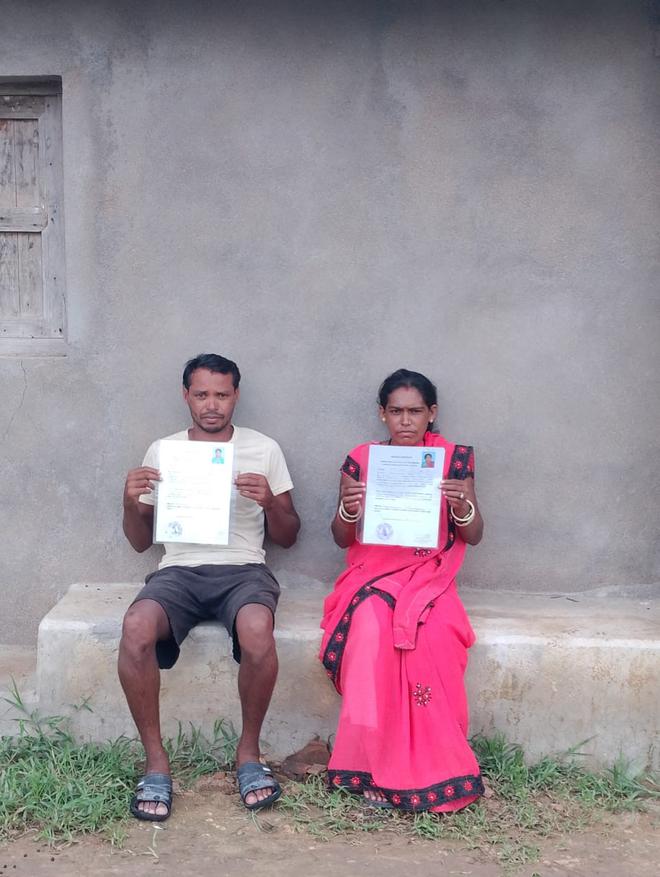Eight years on, Pune Rout from Odisha’s Nuapada district is unable to forget her ordeal in a brick kiln in Tamil Nadu’s Thiruvallur district, where she was forced to work for 12 hours a day despite being pregnant. Her husband, Purosottam Rout, also worked by her side.
The couple’s ordeal ended when the Thiruvallur district administration rescued them and 335 others from the kiln, under the Bonded Labour System (Abolition) Act, 1976 (BLS Act) on February 12, 2015. They should have received ₹20,000 each from the Odisha and Union governments under the anti-slavery Act. But the couple has been waiting for the compensation for almost eight years now.
On June 23, 2023, the Odisha Human Rights Commission that operates under the State government, directed the Panchayati Raj and Drinking Water department to furnish the status of bonded labourers in Odisha by August 22. It also asked noted bonded labour activist Baghambar Patnaik to educate government officials about the provisions of the law.
Since 2010, Mr. Patnaik has been writing letters reminding authorities to rehabilitate at least 2,065 people stuck in caste-based bondage. He was at the forefront of rescuing the barber and washer-folk communities from caste bondage in Puri district two decades ago. “A barber snips hair of fellow villagers’ families for a year in lieu of 15 kg of rice, known as ‘Bartan system’. Barbers or washermen who defied it faced social boycott,” he said.
Assistance denied
The rehabilitation assistance was revised in 2016, to ₹2 lakh each to women and ₹1 lakh to men, and ₹3 lakh if the bonded labourers (women, children, transgenders) are rescued from brothels or sexual exploitation. Yet, there are over 2,000 bonded labourers in Odisha who have been rescued from other States across India, mainly the south, but have not received their meagre compensation under what was once hailed as a progressive law in the country.
The Central Sector Scheme for Rehabilitation of Bonded Labourer-2021 says that those rescued should be put in skilling programmes and linked with government welfare schemes. Ms. Rout and her husband have not benefited from either, despite their representation to the government. But despite the provisions, the Bonded Labour System (Abolition) Act, 1976, appears to be an extremely under-enforced legislation in the country.
“We have been pursuing district administrations for rehabilitation of bonded labourers for several years now. Our appeal has never received the attention it should get. Dejected over the delay, the majority of bonded labourers have embraced bondage again,” said Satyaban Gahir, secretary of Shramavahini, an association of released bonded labourers that works towards their rehabilitation.
When rehabilitation eluded them, Ms. Rout and her husband migrated to Tamil Nadu again, knowing fully well they could get back into the regressive cycle again.

Govt. funding
From 1978 to 2014-15, the Central government has released ₹81.826 crore towards its share of rehabilitation assistance in respect of 2,80,213 released bonded labourers in the country. Eighteen States contributed an equal amount. The total expenditure made on rehabilitation assistance in the country was ₹163.65 crore, by both the Centre and States. The annual average expenditure remained at ₹4.42 crore.
The last credible data set on bonded labourers was reflected in the Socio Economic Caste Census (SECC)-2011, which showed 8,304 bonded labourers rescued in Odisha. The number of legally released bonded labourers in the country was 1.65 lakh. However, the Odisha government never revealed what action it had taken to identify and rehabilitate these 8,304 people, most from the tribal areas. In fact, since 2011, the State government does not maintain a record of the number of bonded labourers rescued.
A State government is required to conduct a survey of bonded labourers once every three years in sensitive districts, with ₹4.5 lakh set aside for each district, with a provision to enlist non-government organisations (NGOs) for this.
“The survey has never been done in the State after 2011. A person is considered under bondage when there is no written contract for work, the remuneration is extremely low, and the employer uses force to compel the labourer to work long hours in inhospitable condition. The government must attempt to identify this population,” said Umi Daniel, a prominent expert on labour issues and head of the migration unit of Aide et Action, an international NGO.
Mr. Daniel said, “The Central Sector Scheme for Rehabilitation of Bonded Labourer-2021 mandates every district administration to set up a corpus fund of ₹10 lakh for providing immediate assistance to rescued bonded labourers. However, none of the districts have set up the fund.” He pointed out that the district-level vigilance committee, which should meet regularly to take stock of bonded labourers, hardly meet.







